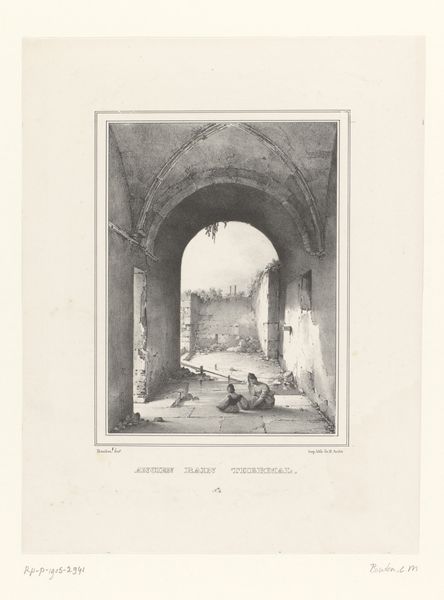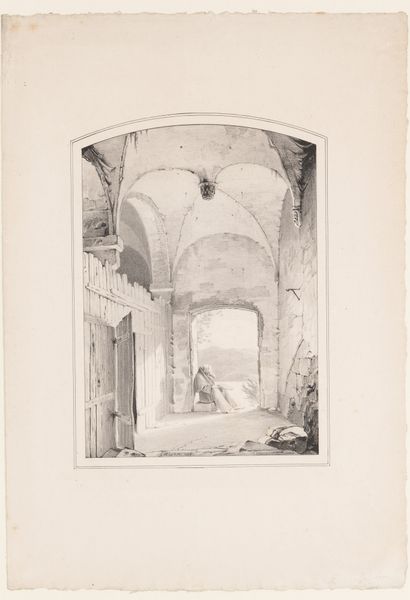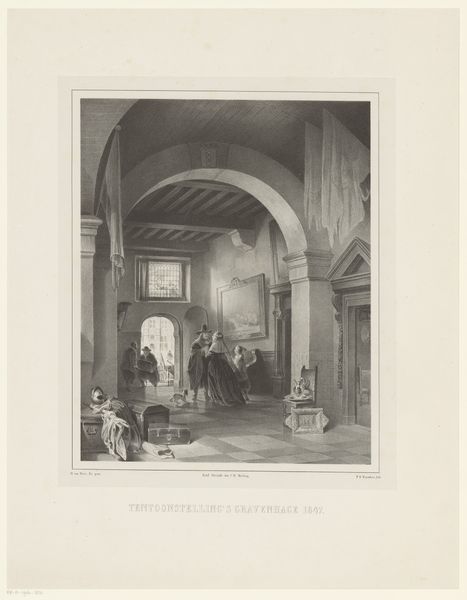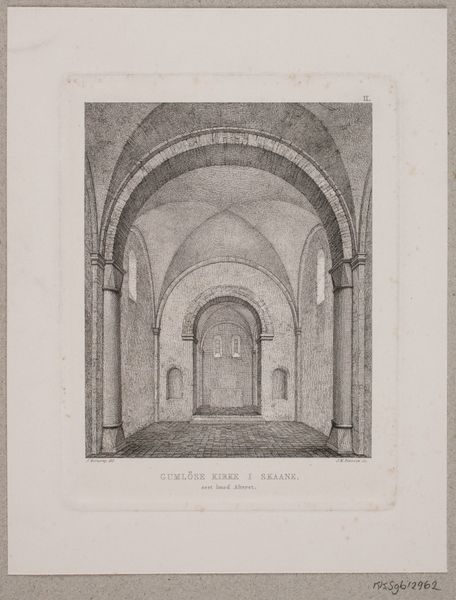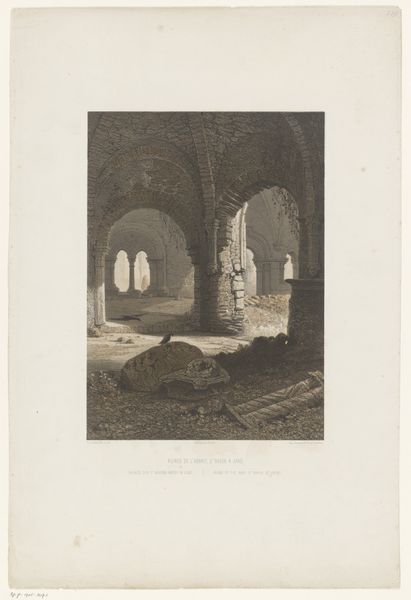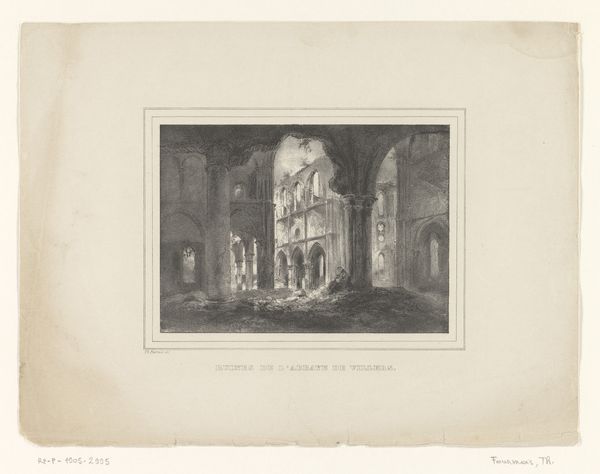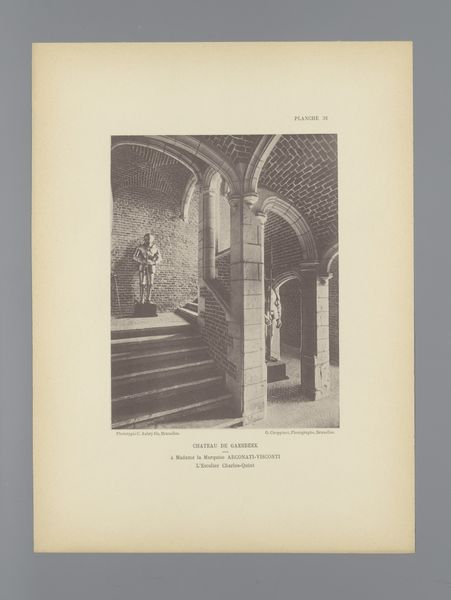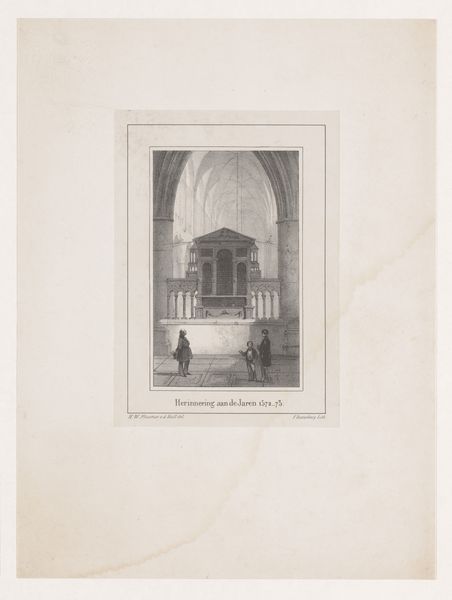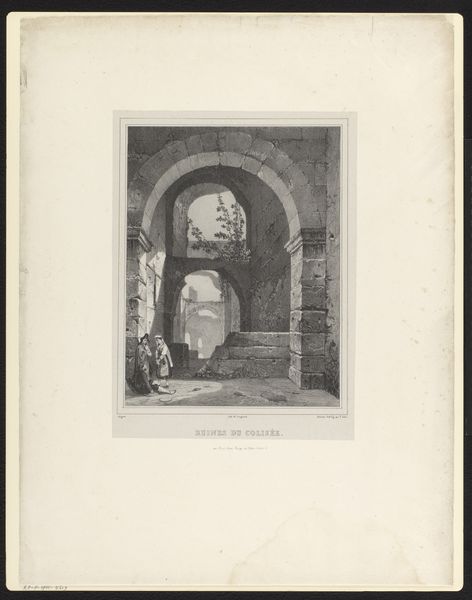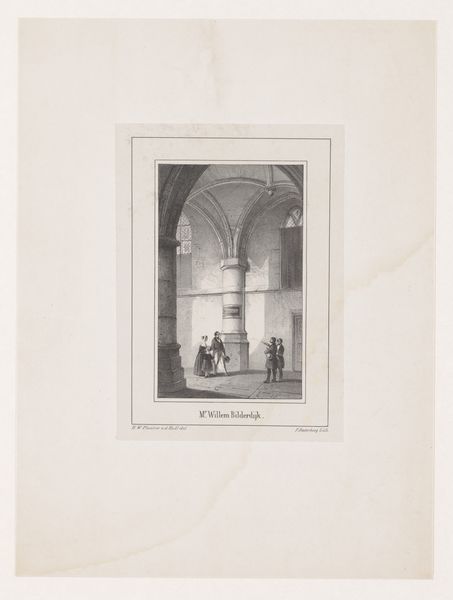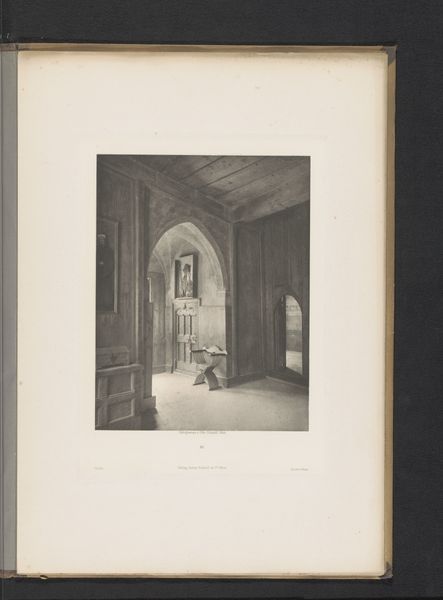
drawing, print, engraving
#
drawing
# print
#
landscape
#
romanticism
#
genre-painting
#
engraving
Dimensions: height 299 mm, width 232 mm
Copyright: Rijks Museum: Open Domain
Editor: This print, "Kartuizers in een kloostergang," from 1832 by Charles Marie Bouton, depicts monks in a cloister. There's such a strong contrast between the dark foreground figures and the bright, almost ethereal space beyond. It's really striking. What do you see in this piece from a formalist perspective? Curator: The allure resides, in large part, in the considered manipulation of light and shadow. Note how the light source, seemingly originating from the vanishing point within the arches, articulates a recessive spatial dynamic. Observe the strategic placement of the figures: are they points of stasis or directional cues? Editor: I see what you mean about the recessive space – the arches create such depth! And I hadn’t thought about the figures as directional… but they do lead my eye further in. Does the use of engraving as a medium contribute to the overall effect? Curator: Absolutely. The linearity inherent in engraving lends itself beautifully to delineating architectural precision, as we see in the rendering of the arches and stone texture. But what about the interplay between that precision and the somewhat softer, almost dreamlike quality of the light? Editor: I guess that contrast enhances the romanticism, creating a nostalgic or idealized feeling of the past. Curator: Precisely. It’s not merely representational; the work is constructed around these tensions, prompting contemplation. How has considering these aspects affected your reading? Editor: It’s made me think beyond the surface depiction to appreciate how Bouton used composition and light to create meaning, rather than just showing us a scene. I had never considered a print capable of producing that quality!
Comments
No comments
Be the first to comment and join the conversation on the ultimate creative platform.
